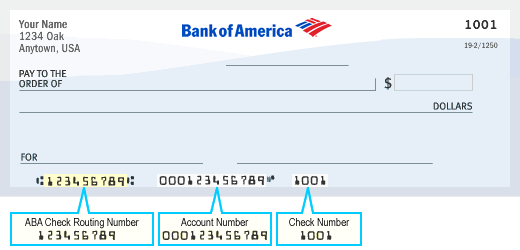
You have many options if you're looking for free stock trading classes. IIM Bangladore (LearnVern), Bulls on Wall Street (Bulls on Wall Street), and Udemy are just some of the options. Each one has its advantages and drawbacks. Make sure that you're comfortable with which one you choose before making a decision.
IIM Bangladore
A national stock exchange offers online courses in stock market for students who are interested. This course covers investing basics and strategies. It also gives students a basic understanding about technical analysis. This helps them to spot trends and patterns in market. The course covers fundamental analysis, technical analyses, and derivatives. You can also take advantage of the 50 supplementary videos and the full-length test.
This online course is for novices who are interested in learning more about the stock market. It includes 9 lessons on 10 topics. Each lesson ends by providing additional material. Students have access to a virtual trading account that allows them to trade stocks live. This account is free to use until students feel confident. The course teaches the fundamentals of the stock market. This includes how earnings are calculated and how charts can be interpreted.

LearnVern
LearnVern offers free stock trade courses to those who want to get started in the stock exchange. Experts with extensive industry experience teach the courses. The courses also include comprehensive guides for trading stocks and establishing an account. These courses are industry-relevant and can be completed easily on any device.
Despite the fact that some online courses offer more content than others, LearnVern's courses provide an industry-relevant education. Modules teach students about trading strategies and how they can be evaluated. They also discuss technical analysis techniques, chart patterns, as well as issues related to risk management. Practical training is also provided on vocabulary and techniques that are used on the trading floor.
Bulls on Wall Street
Bulls on Wall Street offers stock trading courses that will help you trade in the markets. They are for novice traders, provide mentorship and materials, as well as a trading community. You will find a lot of video material. This is an important feature, especially if time is tight and you are unable to read or register for live classes.
Bulls On Wall Street stock trade courses online are absolutely free. But, it does require that you do your homework. You need to be focused and disciplined throughout the learning process. You cannot expect to achieve overnight success using this system. Most readers aren’t disciplined enough for the task. They may watch emails and seminars to get advice, but they don’t really take the time to learn the concepts.

Udemy
A stock trader can have many advantages. And the market is still in demand. Many companies are seeking investment advisors or financial planners. It can be very helpful to have a good understanding of the stock exchange for job searches. These courses are completely free and will provide you with a solid understanding of the stock market.
A free online course on stock trading can teach you how to invest, such as understanding the stock market and the best strategies. The course will teach you how evaluate your portfolio's performance as well as identify your own biases. You will also learn how to select stocks and what types of brokers you should use.
FAQ
Which investments should a beginner make?
Beginner investors should start by investing in themselves. They should learn how manage money. Learn how retirement planning works. Budgeting is easy. Find out how to research stocks. Learn how to interpret financial statements. Learn how to avoid scams. Learn how to make wise decisions. Learn how you can diversify. How to protect yourself against inflation Learn how to live within your means. Learn how you can invest wisely. You can have fun doing this. You will be amazed at what you can accomplish when you take control of your finances.
Can I lose my investment.
You can lose everything. There is no such thing as 100% guaranteed success. But, there are ways you can reduce your risk of losing.
Diversifying your portfolio is one way to do this. Diversification spreads risk between different assets.
Stop losses is another option. Stop Losses enable you to sell shares before the market goes down. This lowers your market exposure.
You can also use margin trading. Margin trading allows for you to borrow funds from banks or brokers to buy more stock. This increases your chance of making profits.
How can I reduce my risk?
Risk management refers to being aware of possible losses in investing.
A company might go bankrupt, which could cause stock prices to plummet.
Or, a country's economy could collapse, causing the value of its currency to fall.
You run the risk of losing your entire portfolio if stocks are purchased.
This is why stocks have greater risks than bonds.
Buy both bonds and stocks to lower your risk.
By doing so, you increase the chances of making money from both assets.
Spreading your investments across multiple asset classes can help reduce risk.
Each class has its own set risk and reward.
For instance, while stocks are considered risky, bonds are considered safe.
If you're interested in building wealth via stocks, then you might consider investing in growth companies.
If you are interested in saving for retirement, you might want to focus on income-producing securities like bonds.
Should I purchase individual stocks or mutual funds instead?
Mutual funds are great ways to diversify your portfolio.
They may not be suitable for everyone.
You shouldn't invest in stocks if you don't want to make fast profits.
You should instead choose individual stocks.
You have more control over your investments with individual stocks.
You can also find low-cost index funds online. These allow you to track different markets without paying high fees.
Should I make an investment in real estate
Real Estate investments can generate passive income. However, you will need a large amount of capital up front.
Real Estate is not the best option for you if your goal is to make quick returns.
Instead, consider putting your money into dividend-paying stocks. These stocks pay you monthly dividends which can be reinvested for additional earnings.
Is it possible for passive income to be earned without having to start a business?
It is. Many of the people who are successful today started as entrepreneurs. Many of them were entrepreneurs before they became celebrities.
To make passive income, however, you don’t have to open a business. You can create services and products that people will find useful.
For example, you could write articles about topics that interest you. You can also write books. Even consulting could be an option. Only one requirement: You must offer value to others.
Statistics
- Some traders typically risk 2-5% of their capital based on any particular trade. (investopedia.com)
- As a general rule of thumb, you want to aim to invest a total of 10% to 15% of your income each year for retirement — your employer match counts toward that goal. (nerdwallet.com)
- According to the Federal Reserve of St. Louis, only about half of millennials (those born from 1981-1996) are invested in the stock market. (schwab.com)
- If your stock drops 10% below its purchase price, you have the opportunity to sell that stock to someone else and still retain 90% of your risk capital. (investopedia.com)
External Links
How To
How to invest in stocks
One of the most popular methods to make money is investing. It is also considered one of the best ways to make passive income without working too hard. As long as you have some capital to start investing, there are many opportunities out there. There are many opportunities available. All you have to do is look where the best places to start looking and then follow those directions. The following article will explain how to get started in investing in stocks.
Stocks represent shares of company ownership. There are two types of stocks; common stocks and preferred stocks. Prefer stocks are private stocks, and common stocks can be traded on the stock exchange. The stock exchange allows public companies to trade their shares. The company's future prospects, earnings, and assets are the key factors in determining their price. Investors buy stocks because they want to earn profits from them. This process is called speculation.
There are three key steps in purchasing stocks. First, determine whether to buy mutual funds or individual stocks. Second, choose the type of investment vehicle. The third step is to decide how much money you want to invest.
Choose Whether to Buy Individual Stocks or Mutual Funds
It may be more beneficial to invest in mutual funds when you're just starting out. These mutual funds are professionally managed portfolios that include several stocks. Consider the level of risk that you are willing to accept when investing in mutual funds. There are some mutual funds that carry higher risks than others. You may want to save your money in low risk funds until you get more familiar with investments.
You can choose to invest alone if you want to do your research on the companies that you are interested in investing before you make any purchases. Be sure to check whether the stock has seen a recent price increase before purchasing. It is not a good idea to buy stock at a lower cost only to have it go up later.
Choose Your Investment Vehicle
After you have decided on whether you want to invest in individual stocks or mutual funds you will need to choose an investment vehicle. An investment vehicle simply means another way to manage money. You can put your money into a bank to receive monthly interest. You can also set up a brokerage account so that you can sell individual stocks.
You can also create a self-directed IRA, which allows direct investment in stocks. The Self-DirectedIRAs work in the same manner as 401Ks but you have full control over the amount you contribute.
Your needs will determine the type of investment vehicle you choose. Are you looking to diversify, or are you more focused on a few stocks? Do you seek stability or growth potential? How confident are you in managing your own finances
The IRS requires all investors to have access the information they need about their accounts. To learn more about this requirement, visit www.irs.gov/investor/pubs/instructionsforindividualinvestors/index.html#id235800.
Determine How Much Money Should Be Invested
The first step in investing is to decide how much income you would like to put aside. You can put aside as little as 5 % or as much as 100 % of your total income. The amount you decide to allocate will depend on your goals.
For example, if you're just beginning to save for retirement, you may not feel comfortable committing too much money to investments. For those who expect to retire in the next five years, it may be a good idea to allocate 50 percent to investments.
It is crucial to remember that the amount you invest will impact your returns. So, before deciding what percentage of your income to devote to investments, think carefully about your long-term financial plans.